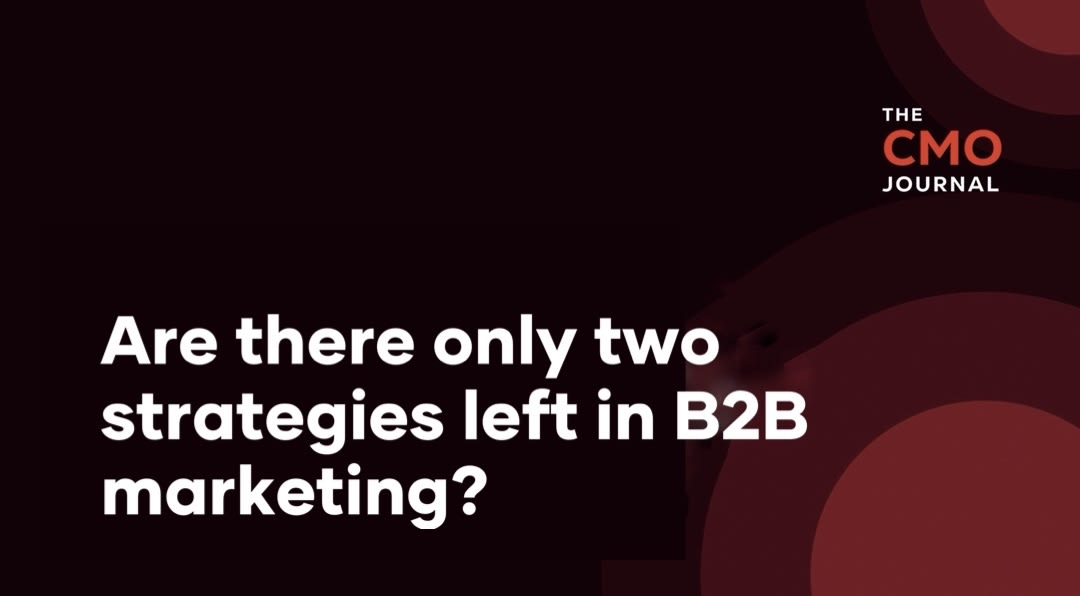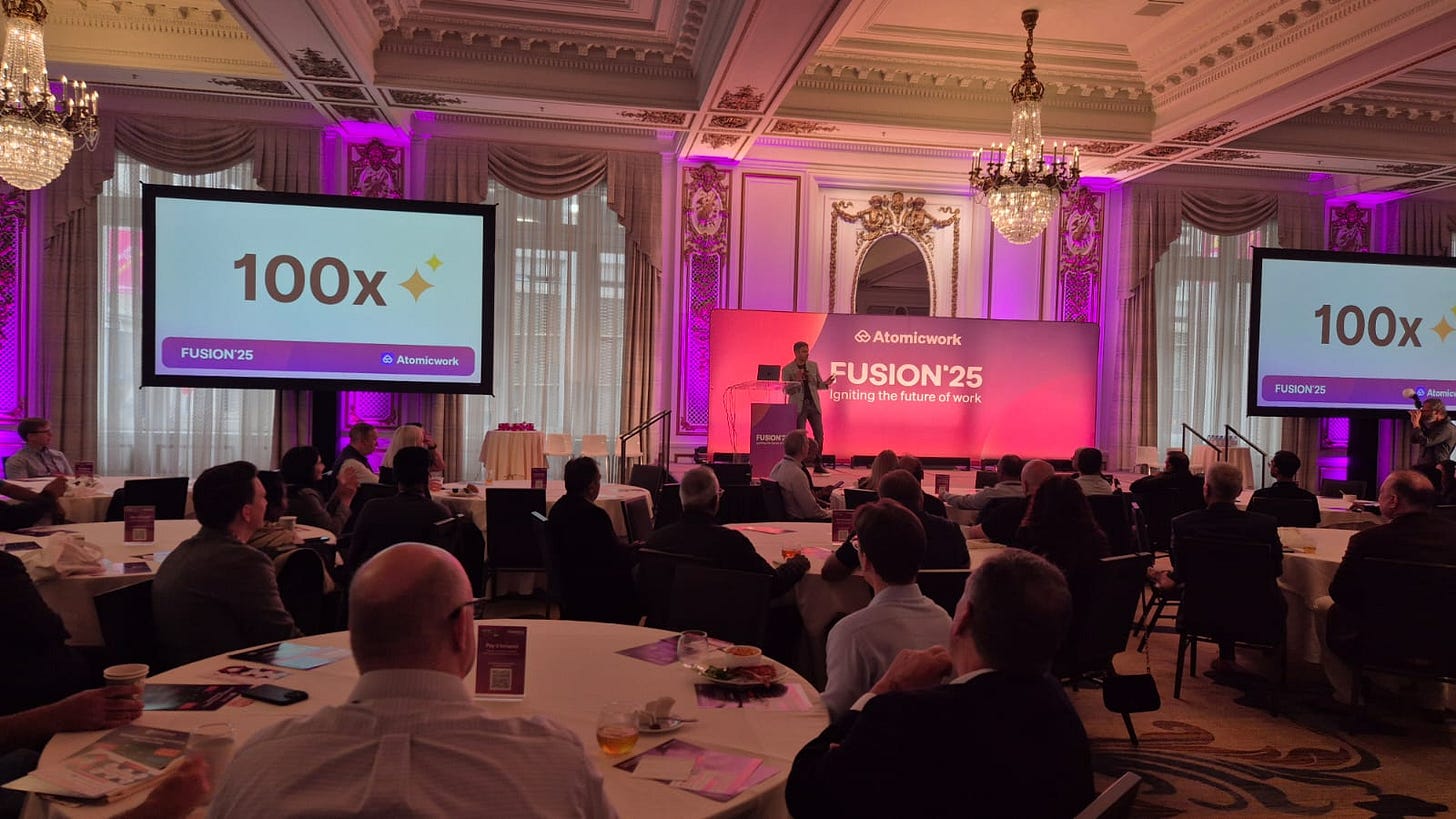Are there are only two strategies left in B2B marketing?
Why creativity and courage are the only real differentiators left
Last week, a friend called me and asked me a single question: What has changed in B2B marketing?
To find some semblance of an answer, we spoke for an hour.
Some context to the question: He was a B2B marketer himself, until his passions took him in a different direction. Now, after a little less than a decade of being in another space, he is trying to build B2B products and distribute them.
Except he is finding that everything has gotten harder than before.
Yes, I said.
And those of us doing this for a while will agree. Distribution, engagement, and selling have become tougher than ever. We have dived deep into the why of this several times on this newsletter, but I’ll just lay some of the reasons out here for folks new to the topic.
There are now way more products competing in the same category, because software has become easier to build, and this means attention is difficult to wrangle.
As a result, channels have become expensive. The old ways of spending money at Google/Linkedin to get to some kind of traction is now out-of-reach, and mostly a waste of money. The numbers simply don’t add up.
Plus with AI, there is a lot of slop. So if you do the same things as everyone else, you won’t get anywhere. You are just more slop. This all means that there is no playbook anymore. Everyone’s writing one for themselves from scratch.
Bigger brands have an advantage of scale. People already know them. But startups have to be something remarkable from the get-go to garner that attention.
There are more reasons, but you get it.
What is the answer, then? What should he, as a marketing-savvy builder, do to get in front of audiences and build a user base?
As I spoke to him, I paced my terrace and realised that there seem to be only two larger strategies left in early-stage B2B marketing. As a test, I tried placing some of the better startups I know in one of the two brackets I had thought of. To my surprise, they fit neatly in.
The first strategy is the category play. If you are early, play in a clear category that remains a genuine need. Build a product that is positioned well for a particular subset in that category and grow from there. Most bootstrapped products follow this to great success. Sure, but where’s the distribution, you ask? The positioning will set you apart, and then you as a founder or as a team have to be creative about how you tell stories and attract attention.
I have an example. I love this relatively popular blog platform built by a solo founder. He is visible on social media and makes content about how his product is better for a subset of the larger TAM. It works because he has a unique point of view, there is always a need for a blog platform, and his cost structure makes him immediately profitable. This is a great way to start and then scale to a medium sized, super profitable company.
Another way is to build a product with the understanding of exactly where you will be able to distribute it. Consider underserved communities of people with high purchasing power, book lovers, for example, or watch enthusiasts. Niche software for them there could be immensely profitable ands super-easy to distribute: The communities literally already exist. You just need to find a way to get in there.
The second strategy is the brand play. It’s pretty clear to everyone in the industry now that the last true moat is brand. Which is also why the more confusing the landscape gets, the better older brands do: They are just trusted more.
This is what newer products need to do as well. But this takes time. Which is why this is a strategy that startups with a longer lead time to go-live, or funded startups, are more comfortable with. When there is time, you can start to build credibility across the board, and by doing so, position yourself for current and future growth. The investment needed usually ensures that only enterprise motions can work with this approach. You are basically investing in trust so you can reap the rewards as you go along. If you are thinking Atomicwork is doing exactly this, then you will be right.
Again, the tactics here are manifold, but we are talking of larger strategies. I asked my friend to think about where among these two plays he would fit in.
Now, he is a experienced founder with a track record, so he has both options available to him, as he can raise funds if he wanted to. But for folks at a different stage of their lives and career, the first play is more viable.
But what was also even more clearer to us from our conversation is what I want to leave you with.
Creativity is now becoming the most important element of your marketing. That, and the courage to put you and your brand out there.
Wasn’t this always the case, you ask? No, not really. In the middle of the aughts, there was a programmatic playbook you could deploy and it would take you to certain number and trajectory. But that has changed.
In a time of sameness and oversupply, you have to stand apart, make your own way. And to find that way, founders and marketers will need both courage and creativity. And they will need them now!
Dear readers, I know I have been away a while.
All of September, work took me to a bunch of places and I just couldn’t find time to write. But it was fruitful. My team and I put together the first edition of the Atomicwork conference, FUSION ‘25. It was very successful, gave us a lot of confidence, and gave CIOs and IT leaders a lot of confidence in us as a product.
A lot of folks were very interested in the thought process behind it, why we did it, and how we pulled it off. Here’s my friend and colleague Sajeesh, our field marketing lead, on how we planned and executed FUSION.
It was no small feat, as a startup, to bring together 80+ CIOs and IT leaders for an event in San Francisco, and Sajeesh’s essay will give you an idea of the what, how, and why of it. I’m very proud of what we achieved.
But it did take a lot out of the last couple of months. I recorded 4 live podcasts in early September for which I had to travel, followed immediately by our company trip, and after a week had to travel for FUSION. As I said, it was crazy. :)
Anyway, the bottom line is that I’m back, and November and December are going to be designated writing months. Also, the community and the meet-up. I haven’t forgotten, and I hope you haven’t either. More on that soon.
Other writing
On my personal blog, I wrote about looking for silence in a really busy and mentally crowded time.
On LinkedIn, I wrote about Sunday evening blues and how to think about them.
And yes, if you haven’t yet subscribed to this newsletter, here’s your reminder to join more than 5000 (really smart) readers!
Until next week!


